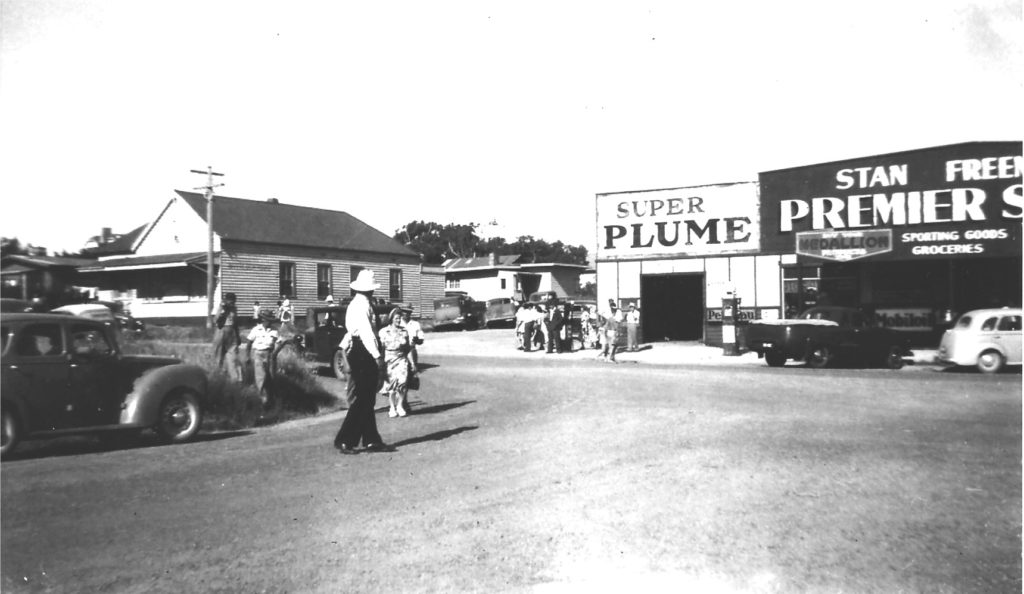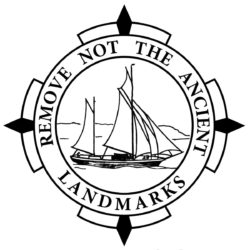What happened yesterday is history today. Whatever happened, or was created or destroyed at Inverloch in the recent past, is history. We cannot avoid history or its consequences. For example, and for reasons of safety, Bass Coast Shire Council has removed the cypress trees around Inverloch Football Ground. In some circles, this has caused dismay, in others delight. But, whatever we feel about the issue, something that seemed a permanent feature of Inverloch has gone; change has occurred. The large trees with their shade, forming a distinct boundary to a well known Inverloch land-mark, are no more. What will replace them? How long will they take to grow? These are some of the questions currently being asked. Take a good look at the aerial photograph in the February 2018 Newsletter, and there, clearly visible, is the football ground, complete with trees. In March 2018, the trees have gone, and Inverloch has changed.
How then, is the Society involved or interested in the tree removal. By definition, our interest is not explicitly concerned with the environment, or appearances, though both considerations are essential. Our focus is on recording what Inverloch once had or how it appeared, and how and why it has changed. You will be pleased to know that a record of the trees now exists, with yours truly having taken a dozen photographs of the trees. These will be entered into the Society’s collection, which is being digitised and catalogued so capably and diligently by Graham Paterson and Susan Hacker.
We need to regularly update our record of how Inverloch is at any point in time, for change is always around the corner. So when photographs are taken of what may appear to be a minor or even trivial event or change, to buildings, trees, the jetty, a club outing, Anzac Day commemorations, people enjoying the beach, and so on, we must remember that in the future these images will assume a higher and more profound significance and be of interest.
 At our June 2017 Exhibition, tremendous interest was shown in the images of A’Beckett Street’s changing face through the 1920s, 1930s, 1950s (see image below), 1960s and the 1980s. Visitors were able to quickly identify unmade roads, weatherboard shop buildings, cars of the day complete with registration plates, shop signs, electricity cables strung along the street, and more. We are fortunate now, that with digital photography, we can click away to our heart’s content, knowing the limitations of the past with negatives, prints , and the potential failure of a quick snapshot, have gone. Costs have also reduced, so we now enjoy a glorious opportunity to record what is around us with ease, a degree of comfort and, given digital media, fewer preservation issues. Thus, keeping a record of Inverloch in the early years of the 21st century is a simpler task, compared with that of our forebears of the 1920’s or even the 1960’s. The Society invites everybody to loan us photos from whatever period. Even casual photos are of interest to illustrate how we dressed and, images of how we spent our holidays can tell us so much about contemporary life. Family pictures and images of persons of influence are of equal interest. We will take great care of your photos and return them, unless you prefer to donate them. We will also seek your permission to enter your photo-graphs into the Victorian and Australian archives (through Victorian Collections & Trove) where anyone can see them.
At our June 2017 Exhibition, tremendous interest was shown in the images of A’Beckett Street’s changing face through the 1920s, 1930s, 1950s (see image below), 1960s and the 1980s. Visitors were able to quickly identify unmade roads, weatherboard shop buildings, cars of the day complete with registration plates, shop signs, electricity cables strung along the street, and more. We are fortunate now, that with digital photography, we can click away to our heart’s content, knowing the limitations of the past with negatives, prints , and the potential failure of a quick snapshot, have gone. Costs have also reduced, so we now enjoy a glorious opportunity to record what is around us with ease, a degree of comfort and, given digital media, fewer preservation issues. Thus, keeping a record of Inverloch in the early years of the 21st century is a simpler task, compared with that of our forebears of the 1920’s or even the 1960’s. The Society invites everybody to loan us photos from whatever period. Even casual photos are of interest to illustrate how we dressed and, images of how we spent our holidays can tell us so much about contemporary life. Family pictures and images of persons of influence are of equal interest. We will take great care of your photos and return them, unless you prefer to donate them. We will also seek your permission to enter your photo-graphs into the Victorian and Australian archives (through Victorian Collections & Trove) where anyone can see them.

A Site for a Nautical & Historical Museum
Our quest to secure tenure of some Crown Land near the jetty continues, with the Society’s Committee authorising President John Hutchinson and Committee member Terry Hall to continue their efforts to build a case that will persuade Bass Coast Shire Council that our objective is reasonable, environmentally sound, and potentially a major tourism attraction and educational resource. Inverloch, as a holiday destination, already offers opportunities to launch and park boats, to swim and to picnic around our glorious coast. What the Society aims to add, is a living and active museum located in the tourism precinct close to the jetty, that will be open to tourists on many days of the year. The museum will, among other things, help broaden visitors’ understanding of the coast through quality information and educational programs, along with regular and changing displays. Inverloch has a proud and intimate relationship with the coast and the sea, not simply because of a replica Ripple located on The Esplanade, but because the very life of the town, from its development in the 1880’s through to 1929, depended on coastal trade as well as enjoyment of the coast for recreation and leisure.

Guest Speaker For March Meeting
Janet Bull from local community radio station ‘3mfm’ will speak about the station at the March meeting. The Society is a member and supporter of 3mfm, thanks to a generous gift by two of our members.
President John Hutchinson will be recording information and stories about Inverloch and district from June 2018 onwards. As the year progresses we’ll provide members with details of the pro-gram schedule.
Local radio gives many community groups (within the station’s broadcasting area in Sth Gippsland) the opportunity to share stories of what they are doing, how they are progressing with their aims, and to publicising specific activities and events. It is our intention to use the facilities offered by 3mfm, so, as they say in radio terms, “stay tuned for further news and information”.
Website Transformation
New member Rod, has begun work to revitalise the Society’s website. He has started by up-dating the information displayed on the site. More extensive change will be implemented as the project progresses. The website and our Facebook page are important ways for us to promote the Society and its work to members and to the local and broader communities. They are also economical ways for us to make some of our visual material accessible to a wider audience and to publicise our growing digital collection on the Victorian Collections website. I want to acknowledge this important work and to thank Rod for volunteering his time and skill in this way.
John Hutchinson, President
Current newsletter
